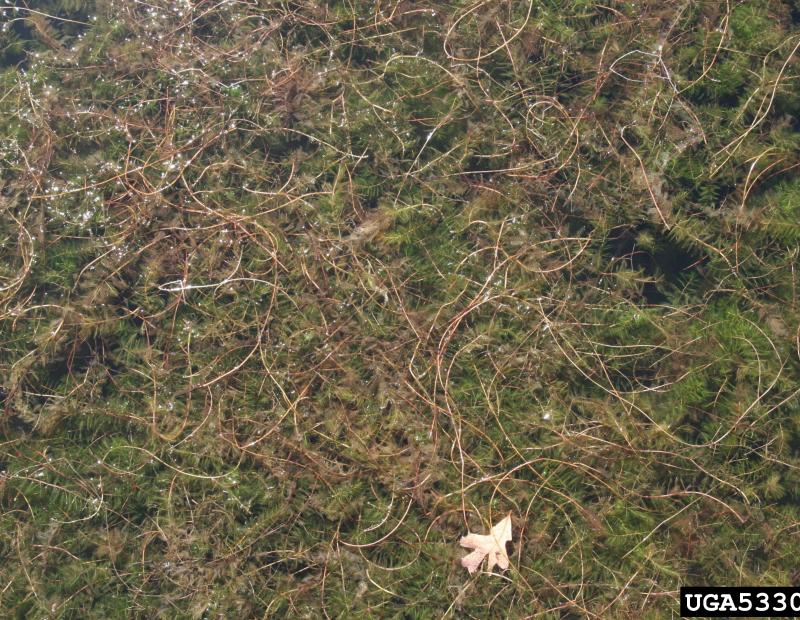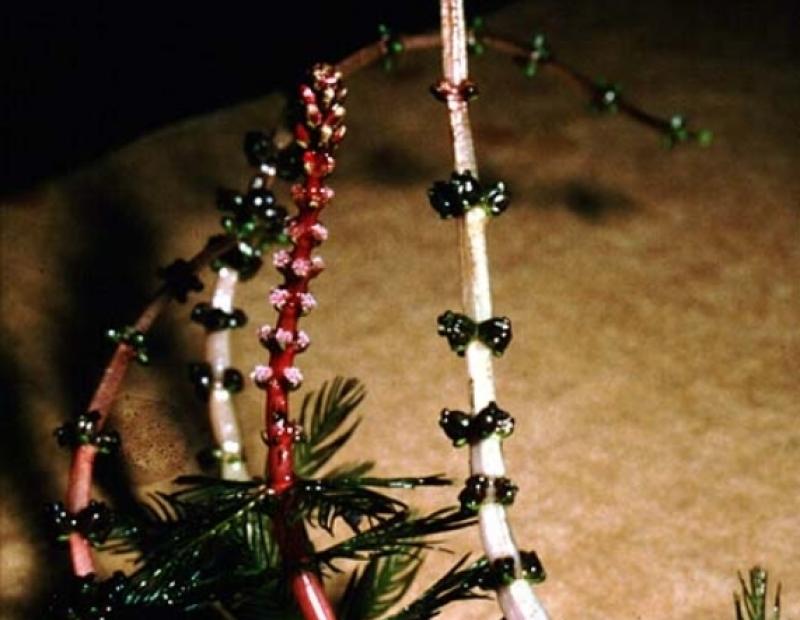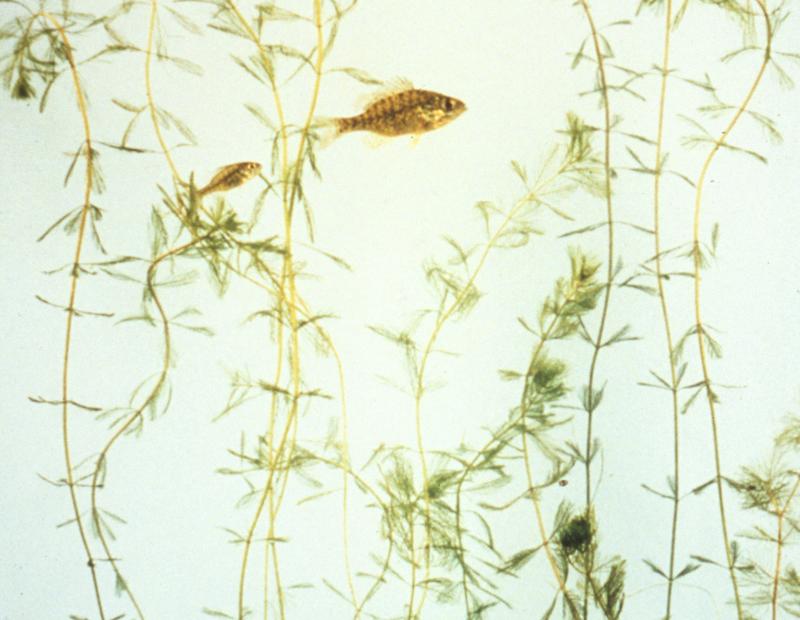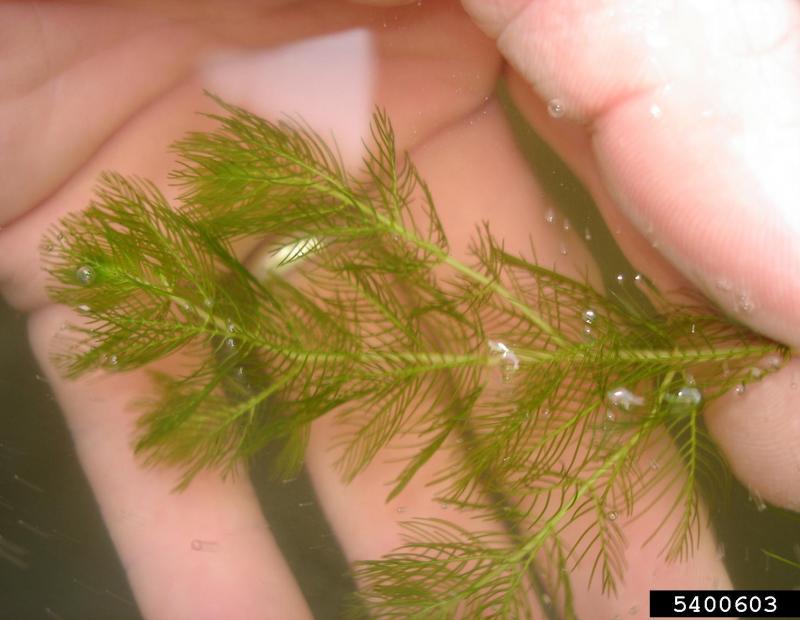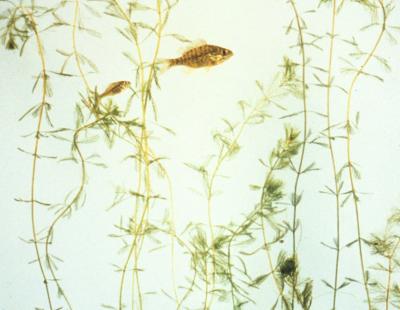- Aquatic Invasives
- Plants
The Eurasian water-milfoil has adapted to a variety of water conditions and has established colonies in lakes, ponds, reservoirs, and low energy areas of rivers and streams. It can grow in brackish water as well as fresh water, and has an affinity for areas that have been exposed to disturbances, such as nutrient loading, intense plant management and excessive motorboat use. This plant spreads rapidly with multiple means of reproduction. It propagates from seeds, roots and stem fragments, often developing roots before seperating from the parent plant. It successfully competes against native plants by its means of reproduction and its ability to grow quickly, stealing sunlight and space from other plants. These plants can also alter the hydrology of waterways, leading to decreased dissolved oxygen content, increased temperatures and pH. They can also have large impacts on recreation, damaging mechanisms of boats, reducing recreational value of nearby locations, and also clogging waterways utilized by facilities.
These plants are native to Europe, Asia, and northern Africa. It was first discovered in the United States in 1881 in Virginia, and in New York the following year. It was likely introduced intentionally, and broad dispersal has occured largely in part due to aquarium and aquatic nursery trade. Currently, there have been established populations in 48 states. More recently, motorboats have been a leading cause of transportation to new waterways.
The Eurasian water-milfoil has green, brown or pinkish-white thin stems, which grow between 1 and 3 meters, progressively getting thinner as they grow. On each leaf, there are at least 14 narrow leaflets. The leaves themselves have an appearance similar to feathers, with four whorled around the stem evenly. The water-milfoil produces small, yellow, four-parted flowers that rise several centimeters above the water surface from the terminal spike. They bloom typically twice a year, mid-June and late July.

